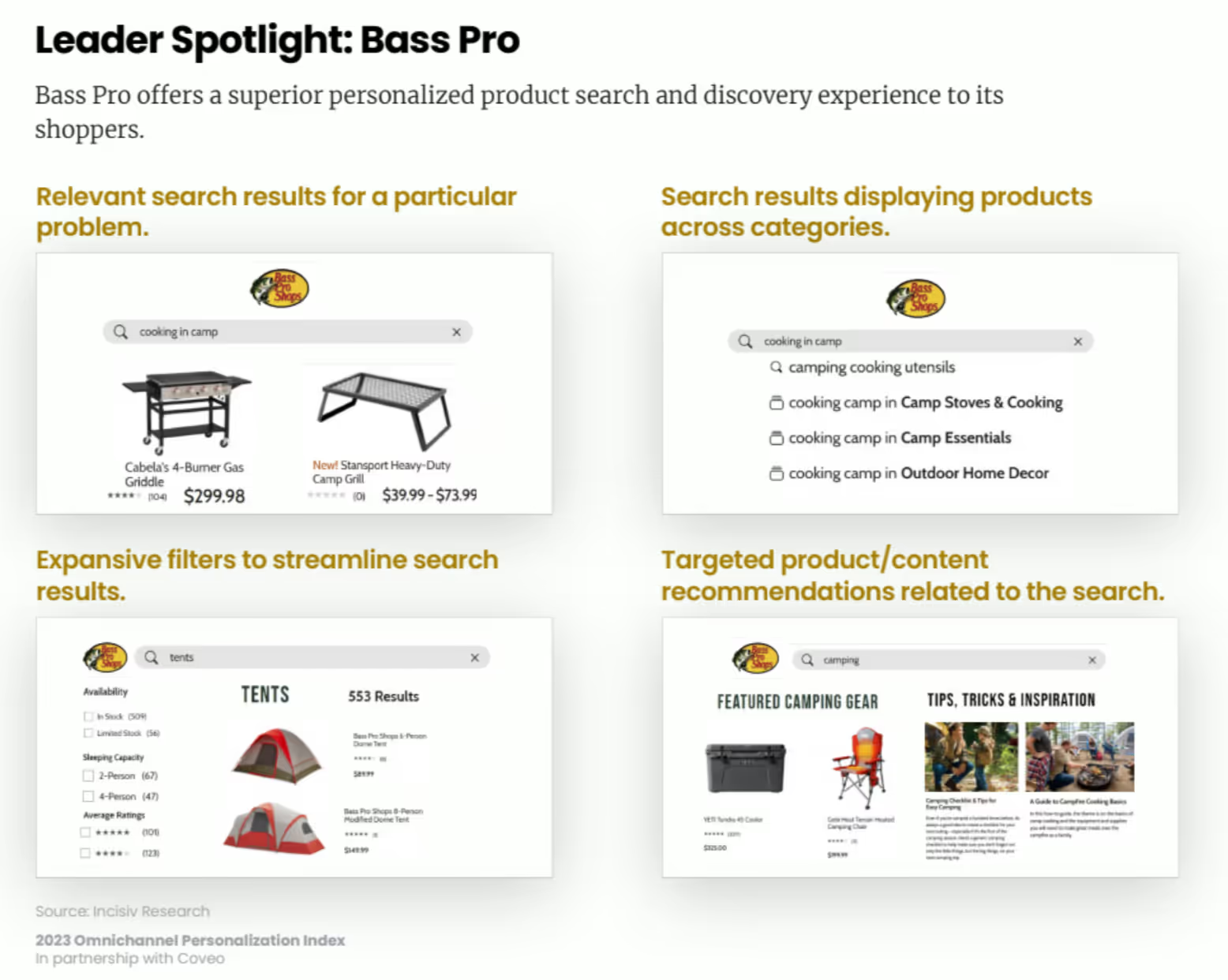.avif)
One thing remains constant in digital marketing: the quest to engage customers on a personal level. As a brand, your success depends on your ability to connect with your audience in meaningful ways. This is where segmentation steps in – a strategic tool that empowers brands to tailor their messaging, products, and services to specific groups of consumers. But as we begin to engage with customers, we realize that there's more to personalization than what meets the eye.
This article will explore the journey from segmentation to predictive personalization, highlighting how forward-thinking companies like Starbucks and Bass Pro Shops are utilizing zero-party data to revolutionize customer engagement and popups.
At the heart of successful marketing it begins with an effective segmentation strategy. It's about understanding that not all customers are the same and targeting your approach accordingly. Starting with basic profile segments such as skiers vs. snowboarders or hunters vs. fishers, brands can lay the foundation for more personalized interactions. These initial divisions set the stage for deeper levels of segmentation. As you gather more data, you can now create more specific segments, like designer shoppers vs. bargain hunters.

However, the true power of personalization lies in the ability to address individual needs and preferences. Moving from broad segments to granular personalization involves acknowledging that one size does not fit all.
The realization of effective personalization hinges on data – the insights that give brands a window into their customers' preferences and behaviors. Most email and SMS providers offer the tools to personalize messages at scale, but the foundation of personalization is built on using data collection tools. It's impossible to create personalized approaches without asking customers for the necessary information. This is the pivot point where brands transition from a generic approach to a customized one.
Looking into personalization's maturity curve means understanding that there's more to consider beyond a customer's name and email. The next level of the curve involves capturing age, gender, and education level – factors that shape an individual's preferences and interests. Progressing even further, brands can tap into a goldmine of data encompassing interests, behaviors, psychographics, geography, and demographics.

It's essential to recognize that achieving higher levels of personalization requires more sophisticated data collection tools. This is where the distinction between average and exceptional customer experiences is drawn. Brands that successfully navigate this curve can forge deeper connections with their audience, driving brand loyalty and ultimately boosting revenue.
Join our newsletter list where you will get the latest trends and insights on collecting and monetizing first-party data.
Predictive personalization is based on one simple principle: historical customer data provides insights into what customers are likely to want in the future. Making the customer journey personalization top notch.
To truly stand out in the realm of personalization, brands need to embrace predictive personalization. This involves leveraging zero-party data to anticipate customer behaviors and preferences before they even express them. Starbucks and Bass Pro Shops are prime examples of companies that have mastered this art.
By analyzing past purchases, browsing behavior, and interactions, brands can create highly tailored experiences.
“You’ve got a fisherman in South Florida who’s fishing for large-mouth bass,” Joe Gies, Sr. Marketing Manager of Creative says. “He’ll be using a specific type of plug or lure—like an orange-colored worm. But we don’t want to feature those types of lures to a fisherman in Wisconsin or Michigan who’s fishing for northern pike. To have authenticity in our presentation, we always feature products that are relevant to each geography.”
Bass Pro Shops uses predictive personalization to recommend products based on users' browsing and purchase history. By identifying patterns and trends, the platform can present customers with options that align with their preferences, making the shopping experience more enjoyable and efficient.

In a world inundated with options and information, personalization has emerged as the answer guiding brands toward a customer-centric success. As consumers, we've become accustomed to experiences that anticipate our needs and desires. Brands like Starbucks and Bass Pro Shops have demonstrated the potential of harnessing data to deliver not just products, but personalized customer journeys. By understanding customers, these trailblazers have transformed traditional marketing into a proactive, intuitive exchange between brand and consumer.
The importance of data collection cannot be overstated. It is the base upon which personalization thrives, enabling brands to cultivate relationships that resonate with authenticity. At the same time, as brands evolve along the personalization maturity curve, they must remember that every advancement carries a responsibility to respect customers' privacy and security.
In a landscape where every interaction is a chance to leave a lasting impression, personalization is the key to meaningful engagement. It's the art of making customers feel known and valued, enhancing their connection with a brand on a profound level. As technology continues to advance and consumer expectations evolve, brands that embrace personalization will undoubtedly forge stronger, more enduring relationships.